Insider Tips: Exploring İzmir’s Cittaslow Town of Foça
Foça offers visitors the opportunity to experience the full character of the Aegean and its exquisite views from the depths. Foça is built upon its namesake Phokaia, an ancient Ionian settlement. Evidence suggests that a walled city was constructed here as early as the second millennium BCE, predating the arrival of the Ionians. Today, Foça's natural beauty and rich history make it an ideal destination for those seeking an authentic Turkish coastal experience, as well as a place to delve into its storied past as a centre of cultural flourishing. Recently, Foça was added to the Cittaslow list, which now includes 21 Cittaslow towns in Türkiye.
We have prepared some insider tips for you to know before coming to Foça, one of İzmir’s Cittaslow Towns!
Foça is widely regarded as one of the most peaceful destinations in Izmir.
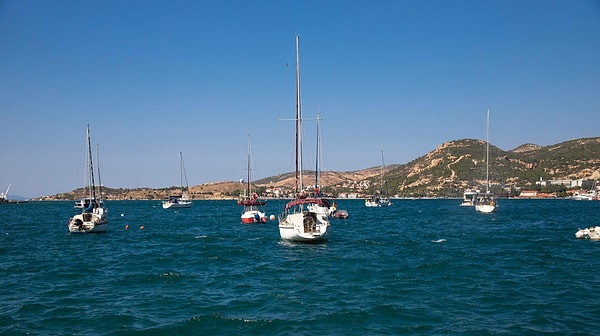
Its serene beachside, lined with fishing boats, provides a tranquil backdrop that evokes the stillness of a painting, with mesmerising reflections in the crystal-clear waters. The town's atmosphere is truly captivating, and the soothing sound of waves lapping the shore creates a hypnotic rhythm. The waves and the setting sun will carry you to the riches of the Turkish cuisine. With a plethora of cafés, bistros and Turkish taverns, Foça offers a rich variety of tastes, including delicious appetisers and various seafood platters.
Foça offers visitors an unforgettable experience in its boutique hotels that have been converted from old stone houses

The stone houses are letting you know that here in the heart of history, you can have a good time.
Persian Mausoleum
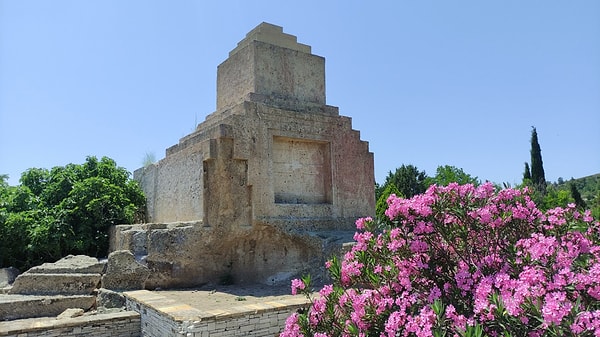
The first landmark you will encounter as you travel from Foça to Izmir is the two-storey Persian Mausoleum, also known as the Stone Tower (Taşkule), which is located 7 km east of Foça. The identity of the original client remains a mystery. However, it is believed to have been constructed by western Anatolian artisans using a monolithic tuff stone block, around 546 BCE, in the aftermath of the Persian expedition on Sardes, following the conquest of Phokaia by the Persians. This is the only Lycian-Lydian structure built under Persian influence in Ionia.
Source: Kültür Envanteri
According to Xenophon of Athens, Cyrus the Great commissioned the mausoleum to commemorate the Susa King Abradatas and his wife Panthea, who committed suicide after his death.
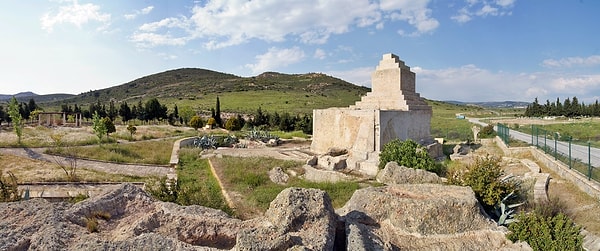
It is believed that the structure served as a prototype for later buildings in Persia.
The mausoleum is located at the end of the Foça-İzmir road, at the entrance to the town. In the same area, there are three other sites: Phokaia's ancient theatre, Great Mother Kybele's holy site, and the Ottoman mills.
Source: Arkeo Denemler
Windmills’ Hill
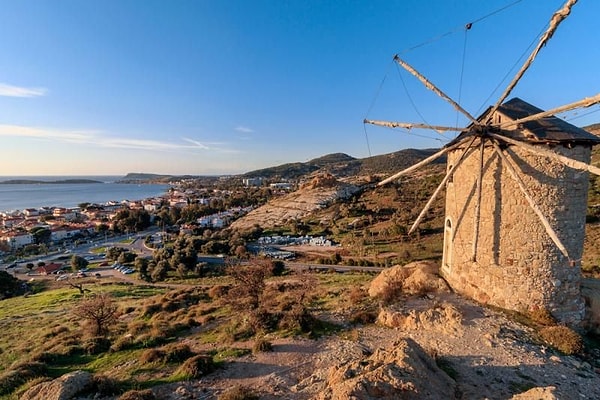
The hill where the three mills are located also contains more than a hundred niches hollowed out as altars to offer gifts to Kybele, the Great Anatolian Earth Mother (or Mother Goddess). At the foot of the hill, you will also find the excavated theatre.
Source: Gezimanya
The town of Foça is located at the centre of this region.
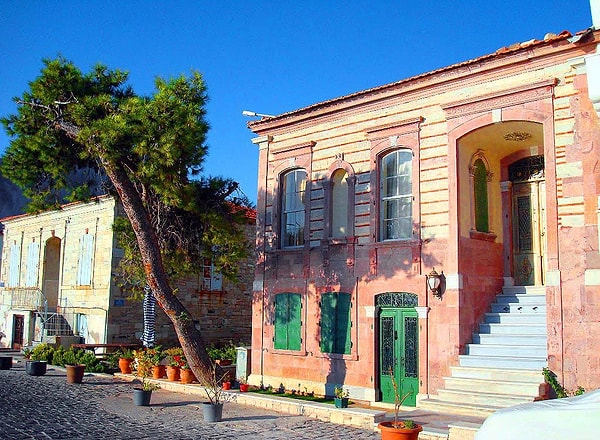
The town boasts beautiful stone houses, some of which have been converted into accommodation services. As you venture further into the coastal region of Foça, you will discover a treasure trove of fresh starters and appetisers, each one a testament to the region's culinary excellence. The finest olive oil is used to prepare the appetisers, which diners are invited to enjoy. Traditional appetisers made from blessed thistle, common mallow, radicchio, asparagus and many other endemic herbs, not only delicious but also very healthy, are undoubtedly the flavours that should be included on your seafood dining tables.
Every restaurant along the beach in Foça is dedicated to providing visitors with this unique gastronomic experience.
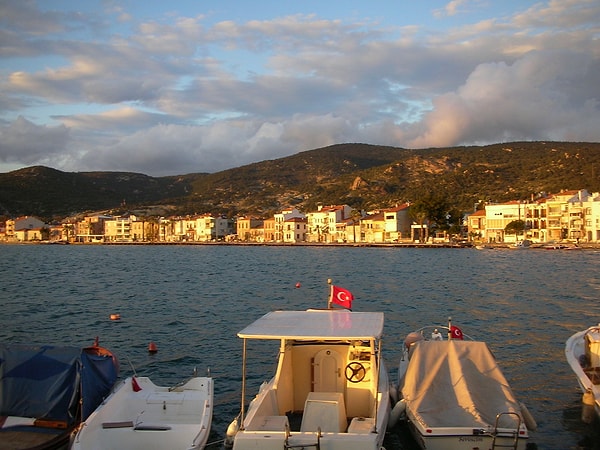
The region's renowned rakı and wine, crafted from the Aegean's finest grapes, are essential accompaniments to these culinary experiences. The streets of Foça, which are brightly illuminated after sunset, provide a lively setting for socialising while you dine.
Ancient city of Phokaia

The ancient city of Phokaia is located on a peninsula between Foça Harbour and Foça Beach. This area of the town contains some of the most significant historical sites in Foça, including: These include the Kybele Open Air Temple, Beşkapılar Castle, and Fatih Mosque.
The Kybele temple is dated to around 580 BCE. The rocky coast is where niches are located for offerings to be made for the goddess. The city wall, constructed in four layers, is situated on the rocky outcrop. The earliest masonry is the Archaic unmortated wall, followed by Roman walls with lime mortar, and later in the Genoese and Ottoman periods, Brickdust (Khorasan) mortar was used to fortify the city walls.
Source: The Byzantine Legacy
The flat rooftop of the structure houses the Ionian temple of Athena, the daughter of Zeus and Metis.
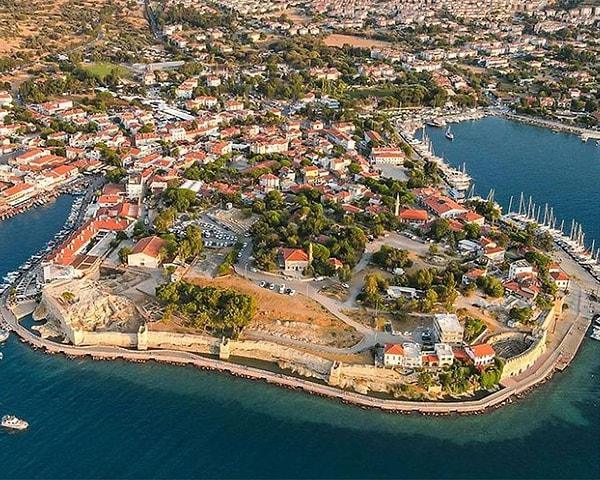
Zeus, the king of the gods, feared that his daughter would bear children more powerful than him. In terror, he swallowed his wife, but the child was born, ploughing through her father's head. Like Kybele, Athena plays a significant role in the cultural development of the town. The juxtaposition of these two temples, built on top of each other, offers remarkable insights into the matriarchal societies of earlier civilizations. The temple's floor is still marked by the watercourses that carried the blood of offerings to the Goddess Athena.
The Beşkapılar Castle, situated on the peninsula, is the ancient town entrance. The castle has undergone several renovations during the periods of the Eastern Roman, Genoese and Ottoman empires, with the aim of strengthening its fortifications and restoring it to its original condition.
The earliest Ottoman structure in the area is the Fatih Mosque, built in 1531 and renovated by Suleiman the Magnificent. The mosque is still in use today.
Source: Oggusto
Replicas
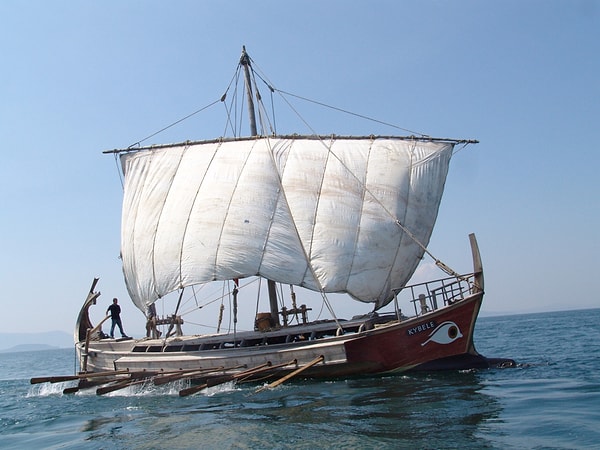
Phokaians are renowned for their pioneering role in maritime exploration, having established colonies across the Mediterranean region, extending as far north as southern Spain. In commemoration of their seafaring society, an initiative was established to construct a ship, the 'Kybele', which was a precise replica of the original. This ship traversed the sea from Foça to Marseilles, another Phokaian colony, in a remarkable 62 days. A statue of the ship can also be seen on the south-western coast of the peninsula.
The coast of Foça is home to numerous statues, including horse and griffon busts and Ionian column replicas, which have been excavated from various sites in the town.
Phokaia, the home of the Phocidae, is a place with a rich history and cultural significance.

Finally, we will address the etymology of the name Phokaia. As with many names, the etymology of Phokaia is somewhat obscure, but we will go with the local favourite. According to this version, Phokaia comes from the Mediterranean seals (Phocidae), and the term 'fok' is also in use in Turkish for seals, as they have been the true inhabitants of the Aegean coasts for centuries.
Foça offers a wealth of historical, cultural and natural attractions, far too numerous to be fully captured in a written description. For this reason, it is the ideal location for a comprehensive holiday experience. In short, the site is ready and waiting to welcome you.
Source: Yeni Asır
Keşfet ile ziyaret ettiğin tüm kategorileri tek akışta gör!

Send Comment